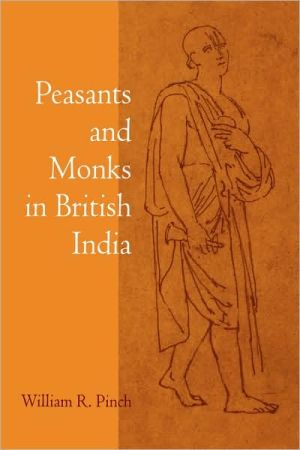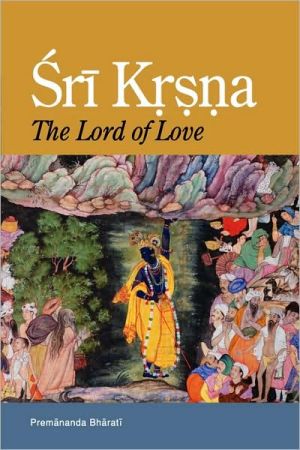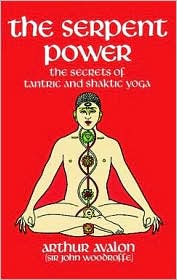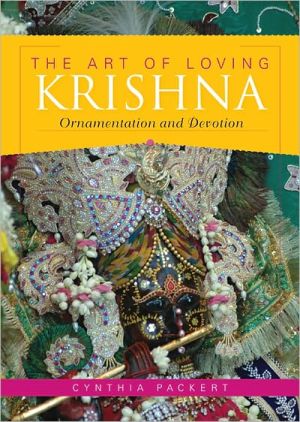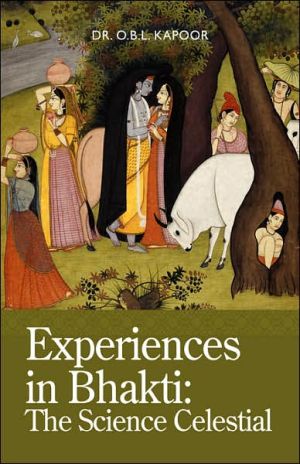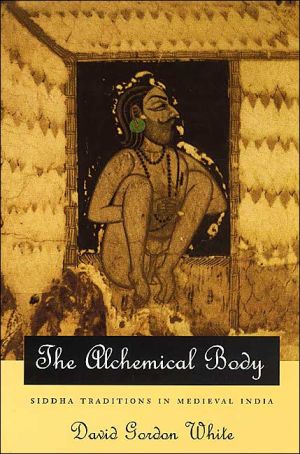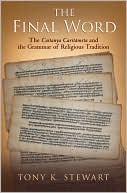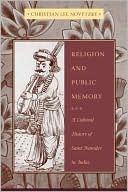Peasants and Monks in British India
In this compelling social history, William R. Pinch tackles one of the most important but most neglected fields of the colonial history of\ India: the relation between monasticism and caste. The highly original inquiry yields rich insights into the central structure and dynamics of Hindu society—insights that are not only of scholarly but also of great political significance.\ Perhaps no two images are more associated with rural\ India than the peasant who labors in an oppressive, inflexible...
Search in google:
In this compelling social history, William R. Pinch tackles one of the most important but most neglected fields of the colonial history of India: the relation between monasticism and caste. The highly original inquiry yields rich insights into the central structure and dynamics of Hindu society—insights that are not only of scholarly but also of great political significance.Perhaps no two images are more associated with rural India than the peasant who labors in an oppressive, inflexible social structure and the ascetic monk who denounces worldly concerns. Pinch argues that, contrary to these stereotypes, North India's monks and peasants have not been passive observers of history; they have often been engaged with questions of identity, status, and hierarchy—particularly during the British period. Pinch's work is especially concerned with the ways each group manipulated the rhetoric of religious devotion and caste to further its own agenda for social reform. Although their aims may have been quite different—Ramanandi monastics worked for social equity, while peasants agitated for higher social status—the strategies employed by these two communities shaped the popular political culture of Gangetic north India during and after the struggle for independence from the British. Booknews Pinch (history, Wesleyan U.) examines on the strategies employed by North India's colonial-era monks and peasants to gain, respectively, social equity and higher social status within the caste system. Also covered are the ways in which each group's struggle shaped the popular political culture of Gangetic India during and after the struggle for independence from the British. Annotation c. Book News, Inc., Portland, OR (booknews.com)
Chapter One \ \ \ Sadhus and Shudras in North India, ca. 1700—1900\ \ \ This chapter has three related objectives. First, it introduces and situates Shaiva and Vaishnava monasticism and related religious movements in the late eighteenth and early nineteenth-century Gangetic north, particularly in the context of expanding colonial rule. Second, it seeks to understand Indian monasticism not as timeless and static (which is how sadhus often represent the religious worlds to which they belong), but as historically measurable, comprising competing social institutions organized around distinct religious and ideological principles and responsive to continually changing political circumstances and economic pressures. Third, and most importantly, I argue in this chapter that north Indian Vaishnava monastic circles contained strong reformist mentalities evident in the relationships between Ramanandi monks and people of low status, particularly in comparison to the competing religious perspectives in the central Gangetic region of Bihar and eastern Uttar Pradesh. These reformist mentalities can be seen as well in traditions relating to both Shaiva and Vaishnava monastic soldiering in the precolonial era, with which this chapter begins; however, the main discussion is focused on the nineteenth century and relies primarily, but not exclusively, on surveys, censuses, and scholarship produced by the colonial desire to possess greater knowledge about Indian society. The subject of Vaishnava reformist mentalities as a basis for ideological change is pursued in the following chapter, which is a more detailed consideration of Ramanandi views onreligion, caste, and inequality in the early twentieth century.\ \ \ Subaltern Sadhus?\ Besides affording an intriguing view of popular ideological change, the history of Indian monasticism is an excellent index of the changing political culture of north India during the transition to colonial rule. Prior to 1800, gosains and bairagis (Shaiva and Vaishnava monks, respectively) exercised broad political and economic influence as merchants, bankers, and, most importantly, soldiers. Powerful mahants (abbots) speculated in real estate and engaged in extensive moneylending activities in order to diversify monastic endowments in urban centers throughout the north, thus facilitating links between the increasingly regional political economies of the late Mughal era. Indeed, Christopher Bayly has suggested that gosains in particular "came the nearest of any Indian business community to the emerging bourgeoisie that European theorists from Sleeman to Marx wished to see." Gosains were so well entrenched in Asian commerce that Warren Hastings saw fit to avail the English East India Company of their good offices in what was ultimately a failed bid to acquire trade relations with Tibet and China in the late 1700s.\ Gosains and bairagis were able to engage successfully in trade and finance during the eighteenth century because they not only possessed excellent commercial intelligence and political connections but had access to a sufficient degree of independent armed force to back their profit-making ventures. In fact, the unsettled conditions of the middle of the century can be seen in retrospect to have benefited the monastic armies, since in addition to protecting monastic endowments, sectarian shrines, pilgrimage routes, and commercial interests, gosain and bairagi regiments were increasingly incorporated in the armies of the major regional powers. Hence, despite the early commonality of commercial interests between the new English trader-rulers and the well-placed gosain and bairagi merchants, it was inevitable that in the rich province of Bengal armed monks and Company soldiers would come into conflict. When it did occur, that conflict took the form of a prolonged series of skirmishes in Bengal and Bihar over four decades (1760s to 1800), usually referred to as the "sanyasi and fakir rebellion."\ At one level, this rebellion seems to have stemmed from purely materialist motives, namely, from the excessive revenue burdens introduced by the Company on monastic and nonmonastic landlords alike and from the tendency of Company officials to side with landlords in disputes with powerful gosain moneylenders. More important, however, was the fact that sadhus were accustomed to bearing arms while on pilgrimage routes through Bengal and in some cases possessed the right to levy contributions from villages along those routes; in addition, many sadhus sought military service with landlords and petty rajas in the region. Company officials, for their part, were increasingly opposed to such practices and sought to discourage the armed bands of sanyasis and fakirs from operating in the province. One early encounter, recorded by the noted Company surveyor James Rennell who at the time (1766) was mapping territory just south of the Himalayan foothill kingdom of Bhutan, bears testimony to the martial potential of armed monks and the resentment of armed sadhus at the new impositions being placed on them by the Company state. Rennell happened upon a skirmish in progress between Company troops and a force of seven hundred such sadhus; the wounds he received included a saber gash that "cut through my right Shoulder Bone, and laid me open for nearly a foot down the Back, cutting through and wounding some of my Ribs, . . . a cut on the left Elbow, which took off the muscular part of the breadth of a Hand, a Stab in the Arm, and a large cut on the head."\ The Company prevailed in that particular confrontation, but over three decades would pass before the akharas (monastic armies) would be disarmed in Bengal or, at the very least, driven beyond Company-controlled territories. This prolonged confrontation between Company soldiers and armed sadhus is generally understood in terms of the Company desire to establish itself as militarily supreme in the province of Bengal. Rarely, if ever, are the ideological implications of the conflict examined by social historians, and the term "rebellion," considered a political overstatement given the nature of the conflict, seems now to have been discarded. However, the phenomenon of armed monasticism certainly posed more than simply a "law and order" challenge for newly ascendant Company officials. Armed sadhus were the very antithesis of the world the company-state was endeavoring to create in the eighteenth and nineteenth centuries, namely, a settled peasant society that would render forth vast agrarian revenues on a regular basis with as little resistance as possible. The modern state in India could not countenance recalcitrant sadhus wandering about the countryside armed, dangerous, often naked, and claiming to represent an alternate locus of authority. The Company needed a modern sadhu: a priestly monk unconcerned with worldly power and given over completely to religious contemplation and prayer. Hence Warren Hastings's proclamation of 21 January 1773 banishing "all Biraugies and Sunnasses [bairagis and sanyasis, or armed Vaishnava and Shaiva monks] who are travellers strangers and passengers in this country" from the provinces of Bengal and Bihar, save "such of the cast of Rammanundar and Goraak [Ramanand and Gorakhnath] who have for a long time been settled and receive a maintenance in land money . . . from the Government or the Zemindars of the province, [and] likewise such Sunasses as are allowed charity ground for executing religious offices." In other words, those sadhus who were "neither vagrants nor plunderers but fixed inhabitants," who "quietly employ themselves in their religious function," could, in Hastings's view, be tolerated.\ Armed monasticism holds more than just military and political-cultural interest, however. There are indications that the rise of Vaishnava and Shaiva monastic soldiering afforded, or in some way reflected, increased entry of people of low social status, particularly those deemed shudra by the twice-born elite, into the major monastic orders in Gangetic north India. In this sense, the history of the armed akharas is not unlike that of the Sikhs in the Punjab, the arming of whom, according to W. H. McLeod, was occasioned by the prolonged infusion of Jat peasants into the Nanakpanthi community. By the eighteenth century the profusion of Jat Sikhs cemented in demographic fact the professed egalitarianism that had long been a powerful ideological component of Guru Nanak's teaching. Hence for McLeod, Sikh hagiography (which speaks of a unilateral decision on the part of Guru Govind Singh to militarize the Nanakpanth in 1699) masks slow processes of social and demographic transformation.\ Similarly, it is possible to perceive the social dimensions of militarization by looking within Shaiva and Vaishnava monastic traditions regarding the decision to take up arms. For example, a widely accepted Dasnami legend recorded by J. N. Farquhar in the early twentieth century held that Shaiva monks took up arms during the reign (and with the approval) of the Mughal emperor Akbar (r. 1556—1605) to defend brahman sanyasis against the persecutions of Muslim fakirs. While the motivational elements of this tradition can be challenged on the basis of both historical and historiographical evidence, it is perhaps more significant that Farquhar also related his general impression that the arming of Shaivas relied on the heavy recruitment of shudras into the elite ranks of the Dasnami order. Whether shudras were indeed actively recruited as soldier Dasnamis, or whether the assertion of past military recruitment became a convenient way of explaining the increasing number of shudras in the order, the fact remains that today certain segments of orthodox, high-caste Dasnamis avoid commensal relations with warrior monks because of the latter's supposedly low origins.\ One can see stronger suggestions of the involvement of shudras (and, indeed, others of low and marginal status such as women and untouchables) in traditions relating to Vaishnava monastic soldiering. One important Vaishnava narrative holds that the arming of bairagis was the product of a conscious decision made in 1713 by leaders of the four main Vaishnava sampraday—often referred to collectively as the chatuh-sampraday, namely, the orders organized around the teachings of Vishnuswami, Madhvacharya, Nimbarkacharya, and Ramanujacharya (in which Ramanandis were included). According to this tradition, the major Vaishnava mahants met at Galta, a temple complex and monastic center very near Jaipur, and decided to resort to arms to defend against increasing attacks by Shaiva monks. Significantly, the Galta meeting in 1713 also marked the emergence of Ramanandis (those who look to Swami Ramanand for inspiration) as the dominant force not only among the followers of Ramanujacharya's teachings, but among Vaishnavas in north India generally. The Galta tradition provides an interesting twist, however: it was also decided in 1713 to declare the untouchable, shudra, and female members of Ramanand's original fourteenth-century coterie of disciples as "illegitimate" transmitters of tradition; in other words, untouchables, shudras, and women would continue to be admitted as Ramanandi novitiates, but henceforth they would have to link themselves to the Ramanandi past via one of the original male, twice-born (in this case, either brahman or kshatriya) disciples of Ramanand. While on the one hand this decision may have reflected the rise of caste mores amongst Vaishnavas, I prefer to interpret it as a move by socially conservative Vaishnavas to limit the ideological effects of what may have been a heavy influx of non-twice-born Ramanandis.\ According to a related and specifically Ramanandi tradition recorded by the anthropologist Peter van der Veer in Ayodhya in the 1980s, loosely organized bands of armed bairagis wandered about north India long before 1700 and were given formal military hierarchy by one Swami Balanand in the eighteenth century. Today the Balanand math (temple-cum-monastery) in Jaipur continues to claim credit for the formalization of the armed Vaishnava akharas. Though elements of the Galta and Balanand traditions appear contradictory (the reasons for which become clearer in the following chapter), they both point to the importance of Ramanandis, and particularly Ramanandis in the Jaipur region, in the formation of soldiering orders among Vaishnavas. That a Vaishnava call to arms should have been associated with the increased influence of Ramanandis is not surprising, since the social liberalism that is associated with Ramanand would have facilitated the process of military recruitment by opening monastic ranks to the lowly. This point is underlined in Ayodhya itself, where a banner emblazoned with Swami Ramanand's famous admonition against inequality—"Ask not of caste and the like, if you love God you belong to God"—decorates the entrance to the Hanuman Garhi, the main headquarters of Vaishnava soldier monasticism in north India.\ Records housed in the Kapad Dwara (warehouse of valuables) of the Jaipur state provide independent corroboration of Vaishnava arms and of attempts to limit the entry of the low-born into the Ramanandi sampraday in the Jaipur region after 1700. In the 1720s and until his death in 1743, Maharaja Jai Singh II evinced a strong interest in religious affairs, particularly religious affairs having to do with the Vaishnava institutions in his realm. And, not unlike Warren Hastings a half century later, Jai Singh II apparently looked askance at the phenomenon of armed monasticism and sought to discourage it. To this end, he solicited and received four separate bond agreements containing pledges from prominent Vaishnava mahants, nine of whom identify themselves clearly as "Ramanandi," to give up the practice of keeping arms and to boycott or otherwise punish those who continued to do so. From separate correspondences it is evident that the Maharaja also solicited opinions from Bengali Vaishnavas regarding the rights of shudras and other low classes, and obtained pledges from Ramanandi mahants and other Vaishnavas not only to maintain strict caste rules in commensal relations but to no longer accept shudra and antyaj (low-born) disciples. The fact that Jai Singh II's efforts to impose orthodox behavior on Vaishnava monks involved the demilitarization of the armed akharas in tandem with the barring of low-born novitiates suggests that arms and low status were connected not just in the Maharaja's vision of a neo-orthodox Vaishnavism but in the social-historical reality of Ramanandi monasticism.\ Hence, though questions and ambiguities remain, both Vaishnava and Shaiva monastic traditions evince links between soldiering and low status. What requires further elucidation are questions regarding functionality and causation: namely, did the need for an armed defense on the part of the monastic orders compel a relaxation of social restrictions in order to spur recruitment? Or, conversely, was the arming of monks the result of the influx of peasants (as with pastoralist-cum-peasant Jats in the Sikh case) and others of low or marginal status into monastic communities, and if so why was militarism the result of that influx? (This is a question that needs greater elaboration with respect to Sikhs as well.) A third possibility that must be considered and that, by implication, obscures any functional relationship between militarization and social change is that the history of monastic soldiering has been used in the more recent past by conservative, high-caste elements in the orders to explain (by way of apologizing for) the contemporary presence therein of shudras, untouchables, and women. An important related question concerns the organizational status of the military akharas in the nonmilitary sections of the religious orders with which they were associated. The tenuous relationships that today exist between "orthodox" (and generally high-caste) Vaishnava and Shaiva monks, on the one hand, and their respective military akharas, on the other, suggest that sectarian traditions regarding the sudden mobilization of the latter in defense of the former may well have masked more prolonged—if contentious—processes of social openness within the orders as a whole. Indeed, the fact that the military akharas survived the monopolization of arms by the East India Company in the late eighteenth and early nineteenth centuries and continue to thrive as important sections of both Shaiva and Vaishnava monasticism in the late twentieth century suggests that their significance to the religious life of north India was (and is) more social than military.\ Whatever the answers to these questions, more research is necessary to know the exact fate of the monastic armies after the passing of the eighteenth century. Certainly, despite the loss of an explicit military function, the trappings of military culture implicit to armed monasticism remained for the most part intact under British rule. The soldier sadhu would become domesticated as a conventional monastic type (as naga) and would complement other forms of monasticism organized around scholarship, devotion and worship, itinerancy, or some combination thereof. Given the apparent survival of the culture (if not the function) of military monasticism, it seems likely that members of the wealthy akharas were able to fall back on the substantial endowments, mostly in the form of land, acquired during the turbulent eighteenth century when their military and financial services were in demand. It is also possible that the many thousands of soldier monks supported by the frequent warfare of the eighteenth century simply melted back into the peasant countryside after the supremacy of British-Indian arms had been established in the early nineteenth century. Such an eventuality would be difficult to document; nevertheless, this was the argument of W. G. Orr—whose main evidence was the nineteenth-century proverb that "the man who smears his body with ashes [i.e., the naga sadhu] can wash it clean again, but the man who has his ears pierced (that is, becomes a Yogi) is a Yogi all his days."\ \ \ Sadhus and the Social Order in the Surveys of Francis Buchanan, 1811—1813\ As is clear from the foregoing, any detailed discussion of the social and political dimensions of north Indian monasticism prior to the nineteenth century is fraught with historiographic pitfalls stemming from the general lack of strong documentary evidence with which to confirm or refute religious tradition. This situation changes as we enter the nineteenth century: Company officials sought to gain a more sophisticated social, political, and economic understanding of the society over which they had acquired administrative, judicial, and revenue-collecting powers, and consequently they amassed a wealth of detail regarding the religious dimensions of north Indian life. The history of this acquisition of knowledge about India is well known and need not be repeated here, save to note that the knowledge acquired took a variety of forms. On one extreme was scholarship focused on the literary splendor of ancient India, grounded in Sanskrit philology and brahmanical tradition and best symbolized by the translations of classical texts by such luminaries as Sir William Jones and H. T. Colebrooke. On the other extreme were the likes of James Tod and Francis Buchanan, who combined an interest in traditional Indian historiographies (and particularly kshatriya, or royal, genealogies) with a facility for recording in voluminous detail the political, social, religious, and economic life of specific regions.\ Buchanan is of particular importance here, because his accounts of Bihar and eastern Uttar Pradesh include frequent and detailed reference to religious belief, popular modes of worship and religious instruction, and the regional structure of monastic organizations. Such descriptions appear in these accounts in three discrete forms: first, Buchanan's "topographical" sections, which describe each subdistrict jurisdiction, include an assessment of the relative strength and appeal of monastic gurus; second, his descriptions of each caste usually contain reference to its religious customs and attitudes; and third, the same section on caste concludes with a general discussion of the "sages and sects" of the district, organized according to monastic perspective. The value of such a three-tiered approach is that it affords a textured and multidimensional picture of the monastic and religious life of the Gangetic core.\ Perhaps the most immediately revealing feature of Buchanan's Bihar accounts, from the monastic perspective, is what they omit: armed monks. Buchanan made only one brief reference to military monasticism, and that only to explain its absence. Noting that many Ramanandi nagas continued to find service "in the armies of the Rajas beyond the Yamuna" (beyond direct British control in what is now Rajasthan, southern Uttar Pradesh, and Madhya Pradesh), Buchanan observed that the few who remained in south Bihar "have been obliged to abandon arms and predatory habits, and for some time their bands have not ventured to traverse the country." Buchanan's village-based sages are closer to the normative image of the nonthreatening monk implicit in Warren Hastings's 1773 proclamation barring itinerant, armed sadhus from passing through in the province of Bengal. A similar portrait would be painted by Horace Hayman Wilson, the eminent Sanskritist of the mid-nineteenth century, who observed that "the tenants of these maths, particularly the Vaishnavas, are most commonly of a quiet inoffensive character, and the Mahants especially are men of talents and respectability, although they possess, occasionally, a little of that self-importance, which the conceit of superior sanctity is apt to inspire."\ In retrospect, it can be argued that with the gradual removal of armed monks from territories controlled by the Company in the late eighteenth and nineteenth centuries, north Indian monasticism turned inward, away from worldly martial pursuits and toward more aesthetic, devotional, and literary accomplishments. In the Vaishnava context, this would have meant a greater emphasis on rasik-oriented bhakti, or "devotional aestheticism," which had a constituted powerful strand of both Ram and Krishna worship since the sixteenth century. The rasik tradition emphasizes heightened emotion, the careful perception of sensory experience, and in the Ramanandi context, a focus on Sita as a means of access to Ram; consequently, many "rasiks," as the practitioners of this mode of religious devotion were known, adopted the persona of a handmaid to Sita. As we shall see in the next chapter, many of the main players in the politics of the Ramanandi sampraday in Ayodhya and throughout the Gangetic north were associated with the rasik tradition.\ Whatever the particular mode of asceticism, the majority of the sadhus in Buchanan's accounts wielded a great deal of popular influence as village gurus—a role that combined the duties of teacher, counselor, spiritual guide, and pious exemplar. Hence it would not be inappropriate to understand them as "guideposts for the common person's society and its changing moral character" and the religious arena they inhabited as a "locus for raising social issues and for initiating and influencing change within Indian society." In addition, these village gurus represented the point of contact between rural peasants and the monastic networks that crisscrossed the subcontinent. Buchanan's work took him through much of deltaic and upper Bengal and the Gangetic core, including regions that became known by 1901 as the Bihar districts of Purnea, Bhagalpur, Monghyr, Patna, Gaya, and Shahabad, and the Uttar Pradesh districts of Basti and Gorakhpur. While all his accounts are of immense social-historical value, three of them—Bihar and Patna (1811—1812), Shahabad (1813), and Gorakhpur (1813)—possess enough religious and social detail to afford an intriguing statistical snapshot of the demography of monasticism and its popular appeal in the early nineteenth century.\ Each account begins with a "topography" of the district, organized according to administrative precinct, or thana. Bihar and Patna (conforming roughly to the 1901 Gaya and Patna Districts, respectively) contained a total of seventeen thanas of widely varying size and population; Shahabad ten; and Gorakhpur twenty-eight (two of which were completely deserted and most of which were relatively sparsely populated). Buchanan's treatment of each begins with a one-paragraph description of the geographical setting and basic demographic and physical dimensions, then turns to a brief mention of the thana's administrative, police, and juridical personnel. This is followed by a much more detailed statement of the institutional strengths and local authority and appeal of each religious perspective in the thana. Rather than percentages, he employed the Indian anna standard of sixteenths; occasionally he would utilize eighths, twelfths, twenty-fourths, and thirty-seconds when greater simplicity could be employed or greater accuracy was called for.\ The following, rather lengthy excerpt from Shahabad District's "Dumraong" (variant of Dumraon) thana is typical in many ways of Buchanan's descriptive method:\ This jurisdiction, although very large and populous, is so compact, and the native officers of police are so centrically [sic] situated, that little inconvenience is felt from these circumstances. The police of a small portion adjacent to Vagsar [var. Buxar, Baksar], at the N.-W. corner of the division, is under the inspection of the military officer commanding that fortress. This is the only division in the district which enjoys the advantage of a court for the trial of small debts, without applying in the first instance to the judge. The commissioner for this court is also the hereditary Kazi, who resides at Kazipur 3 miles N. from Dumraong, the residence of the police officers, and near one side of his jurisdiction, both circumstances attended with considerable inconvenience. The Kazi [judge] confines himself entirely to the deciding of causes [cases?], and attestation of deeds, and appoints deputies to perform all religious ceremonies. Here is also a hereditary Mufti, a description of officer, with which I have not previously met. No Pirzada [Sufi shaikh] resides, and those who become Murids [followers], employ vagrants.\ Of the Hindus 4/16 are unworthy to the notice of any sage:\ 4/16 are of the sect of Sakti; 2/16 adhere to Siva. Of these 6/16 five belong to the Brahmans, and one to the Dasanami Sannyasis. Most of the Brahmans reside [i.e., they do not visit periodically from other thanas], and Ritu Raj Misra, a Sakadwipi, who lives at Vagsar, and is the family priest of the Bhojpur Rajas, has very extensive authority and influence. He is a man of considerable learning, and affects very austere manners, to which last circumstance is probably owing much of his authority, although those who receive sacred instruction from his mouth, are mostly if not entirely of the sects of Saiva or Sakti, he is of the sect of Vishnu; and it is alleged, that the form of prayer, which he gives, is addressed to some form of this deity, which is indeed quite the same to his followers, as they do not understand a word of it. Perhaps however this may be a story invented by some of those, who are envious of his success. As the form of prayer is a profound secret, the truth could not easily be discovered. The Dasanamis have 2 maths, and about 20 smaller houses here called Mathiyas. At the 2 maths there reside about 15 men, who have relinquished the world; some of the inferior houses are occupied by persons, who indulge in the pleasures of matrimony.\ 3/16 of the Hindus adhere to the sect of Nanak. There are 4 meetings, all belonging to Jagdishpur [a town in central Shahabad], and the men, who preside, abstain from wedlock. Two of these places have the title of (Gadis) thrones.\ 2/16 of the Hindus adhere to Vishnu, and follow chiefly the Ramawats, but some are disciples of Madhava, and some of Nima; no one, however with whom I met, could tell the number of houses, that belonged to each. There is one Akhara at Dumraong and 40 at Vagsar, all occupied by persons entirely dedicated to God. There are also 50 houses occupied by married persons, who instruct the canaille, and are called Vaishnavas. All were originally Sudras.\ 1/16 of the Hindus follow the new routes to heaven: the Kavir Pangth has 10 Gurus, who occupy Mathiyas, some of them married, some single; while there are 20 persons, that adhere to the doctrine of Siva Narayan.\ \ \ The remainder of Buchanan's discussion in this particular thana (as with most other thanas) is focused on the quality of the soil, the types of irrigation, the number of houses of various kinds and their manner of construction, local fortifications, the main places of worship, the major festivals, local history and legend, and any interesting archeological or antiquarian remains in the vicinity.\ A few points that emerge in the above excerpt merit special emphasis, inasmuch as they relate to broader patterns in Buchanan's accounts. First, in each thana Buchanan noted the proportion of the population (usually between one-eighth and one-fourth, but occasionally as high as one-half) considered by his informants (of whom more later) to be "unworthy" of religious instruction. He nevertheless included in most of his topographical descriptions the relatively small proportions dedicated to such reformist sects as the Kabirpanthis and Sivanarayanis, both of which were aggressively egalitarian and, indeed, anti-brahmanical and hence tended to attract followers from a wide social spectrum, including untouchables and "unclean" shudras. Taken together, these facts suggest that while Buchanan's religious description did not altogether ignore the religious views and practices of people deemed extremely low-status, he nevertheless dealt mostly with what may have been considered acceptable and demographically important, if not respectable, religious points of view; again, this would reflect the middle and upper-caste views of the people from whom he gleaned his data, not to mention the Bengali pandits who assisted him in his surveys and who in any case looked askance at much of Bihari culture. In any event, the lengthy discussions that usually followed Buchanan's religious tabulations include local village deities whose worship was often conducted by the socially and culturally marginalized lower classes; these were the kinds of people, and the kind of religious traditions, excluded in the systematic numerical descriptions that began each section.\ The second point that requires emphasis is slightly more complex. Buchanan's description of the sectarian dimensions in Gangetic Bihar and eastern Uttar Pradesh took two complementary forms. On the one hand, Buchanan conceived of three main divisions of Hindu religion: Shaiva-Shakta, Vaishnava, and panthi (the more recent "routes to heaven" espoused by Kabir, Nanak, and the like). On the other hand, within these large (and often overlapping) divisions were religious communities organized around the institutional ties of gurus, which usually took monastic form. Dasnami sanyasis represented the main Shaiva monastic group; Ramanandis (often referred to as Ramawats) the main Vaishnava monastic group. The main panthi community that emerges in Buchanan's accounts was the Nanakpanth, associated with the teachings of Guru Nanak, which was particularly influential in south Bihar. Other, much less prominent (at least, in the Gangetic core regions described by Buchanan) religious perspectives that possessed varying degrees of monastic manifestations were represented by the (Shaiva) Kanphat yogi community, which looked to the teachings of the fifteenth-century Gorakhnath (on account of which they are frequently referred to as Gorakhnathi and Gorakhpanthi); the (Vaishnava) Radhaballabhi sampraday, centered on the worship of Krishna as Radha's lover; the ("reformist") Kabirpanth, and the more recent (also "reformist") Shivanarayani (centered in nearby Ghazipur District in what is now Uttar Pradesh) and Daryadasi communities (centered in Shahabad District).\ At the risk of an overly long aside, it should be noted that there is a tendency to be overly schematic when describing the sectarian dimensions of monasticism. Such a tendency should be carefully qualified if not avoided outright. It is best to understand Vaishnava, Shaiva, and Shakta as terms that refer to distinct yet overlapping, and evolving, systems of religious meaning with broad popular appeal that have been drawn upon in varying degrees by thinkers over the past millennium. Two extremely important figures were Shankaracharya and Ramanujacharya, each of whom is remembered to have identified in complex metaphysical and epistemological discourses the most efficacious way of perceiving divine truth(s). They themselves have long been associated with or, perhaps more precisely, been thought of as founders of major monastic communities with distinct sectarian (Shaiva as opposed to Vaishnava) dimensions. However, while Shankaracharya's status as the founder of the Dasnami order has remained unquestioned by Dasnami sanyasis, Ramanujacharya's status as a formative figure in the Ramanandi sampraday has been a matter of major contention, particularly in this century—a contention best symbolized by the very name that has come to be associated (even as early as the eighteenth century) with the monastic community that for many years viewed Ramanujacharya with great reverence. The examination of the history of this contentious moment in the Ramanandi sampraday, and of the socially radical understanding of the life of the fourteenth-century Ramanand that was re-crystallizing at this time, is the central object of the next chapter. What is important to recognize here is the manner in which individual monks were able to endow the doctrinal tenets and social philosophies of their orders with wider Indic meanings.\ Another important and more recent figure in the religious history of the subcontinent is, of course, Guru Nanak, whose perception of an ineffable god became the spiritual fount for Sikhism. However, interpretations of Nanak's teachings varied, and as a result the Nanakpanthis observed by Buchanan in early nineteenth-century Bihar should not be confused with the khalsa Sikhs of the Punjab, though the communities were closely related. Buchanan himself noted that the followers of Nanak were divided into two groups: "the Khalesah sect founded by Govinda [i.e., Guru Govind Singh], and confined in great measure to the west of India," and "the Kholesah or original Sikhs who prevail in Behar." In other words, most Nanakpanthis in Bihar remained aloof from the khalsa-fication of the sampraday. Today, the Nanakpanthis described by Buchanan would be referred to as "Udasin" and see themselves as the caretakers of universal truths articulated by Guru Nanak, particularly as mediated through Nanak's eldest son, the exceptionally long-lived Shri Chand (1494—1629). Upon the death of Nanak, the mantle of leadership in the Nanakpanth passed not to Shri Chand but to one of Nanak's favored disciples, who became known as Guru Angad, thus beginning the succession of ten gurus that would end with Govind Singh. According to modern histories based on prevailing khalsa Sikh hagiography, Shri Chand and his followers were expelled in the sixteenth century from the Sikh community. According to Udasin tradition, by contrast, the links between the Shri Chand and his followers, on the one hand, and the Sikh gurus and their adherents, on the other, remained strong well into the seventeenth century. For example, Udasins have long maintained that the sixth guru, Hargovind Singh, placed his son Gurditta under the personal and spiritual care of Shri Chand, who by this time was nearing the end of his long life. Indeed, not only is Gurditta himself remembered as an important Udasin guru, four of his disciples are said to have founded the principal Udasin subsects.\ The history of the gradual bifurcation of Nanakpanthis into what Buchanan called the Khalesah versus Kholesah divisions, or what today would be called Sikh versus Udasin, is closely linked to the changing demography of Sikhism in the Punjab and the rise of a khalsa military culture in the seventeenth and eighteenth centuries—in contrast to developments in the Gangetic north, where the rise of a military ethos in religious communities occurred primarily among Vaishnavas and Shaivas. That division was further hardened by the British recruitment of Sikhs into the Indian army, the rise of the Singh Sabha in and beyond the Punjab, and the emergence of Akali politics surrounding the status of Sikh shrines (controlled before 1925 by Udasins) in the nineteenth and twentieth centuries.\ Buchanan's tabulations of monastic groupings within either the Shaiva-Shakta or Vaishnava rubric are further complicated by the fact that he tended to draw a distinction between monastic gurus and brahman gurus. This practice probably reflected the fact that many of his local monastic informants themselves drew such a distinction; it may also have reflected the socioreligious predilections of the Bengali pandits who assisted him in his data gathering. Despite these factors, however, it is likely that in the case of Vaishnavas, brahman gurus such as the influential Pandit Ritu Raj Misra, mentioned in the extract cited above, were affiliated with Ramanandi teachings—though the exact nature of that affiliation remains unclear. The Ramanandi connections of Vaishnava brahmans emerge in a later passage describing monastic establishments in Buxar (which was, Buchanan noted, the main Ramanandi center in Shahabad District). Buchanan observed that in Buxar "the convents of the Brahmans, who have adopted this [the Ramanandi] order, as usual are confounded with those occupied by Sudras, nor have I been able to distinguish the number of each"; in a characteristic aside, he added that "my Bengalese assistants[,] confounding them [Bihari Vaishnavas] with the Vaishnavas of their own country, hold them in the utmost contempt." In contrast to the Vaishnava credentials of most brahman gurus in Shahabad, Buchanan observed that "most of the Pandits, who act as Gurus in [Bihar and Patna] districts, worship Sakti as their favourite, and are Tantriks." As he proceeded northwest from Shahabad into Gorakhpur District and closer to Ayodhya, which by this time was firmly established as a major Ramanandi monastic and pilgrimage center, Buchanan recorded increasing numbers of brahmans serving as Vaishnava gurus.\ (Continues...)\ \ \ Excerpted from Peasants and Monks in British India by William R. Pinch. Copyright © 1996 by the Regents of the University of California. Excerpted by permission. All rights reserved. No part of this excerpt may be reproduced or reprinted without permission in writing from the publisher. \ \ \ \
A Note on Translation and TransliterationAcknowledgmentsIntroduction: Peasants, Monks, and Indian History11Sadhus and Shudras in North India, ca. 1700-1900232Ramanand and Ramanandis, ca. 1900-1940483Being Vaishmava, Becoming Kshatriya814Culture, Conflict, and Violence in Gangetic India115Conclusions139Appendix 1: Francis Buchanan151Appendix 2: Dharnidharacharya and James Tod155Appendix 3: Gopa Charitam161Notes165Bibliography215Index233
\ BooknewsPinch (history, Wesleyan U.) examines on the strategies employed by North India's colonial-era monks and peasants to gain, respectively, social equity and higher social status within the caste system. Also covered are the ways in which each group's struggle shaped the popular political culture of Gangetic India during and after the struggle for independence from the British. Annotation c. Book News, Inc., Portland, OR (booknews.com)\ \
